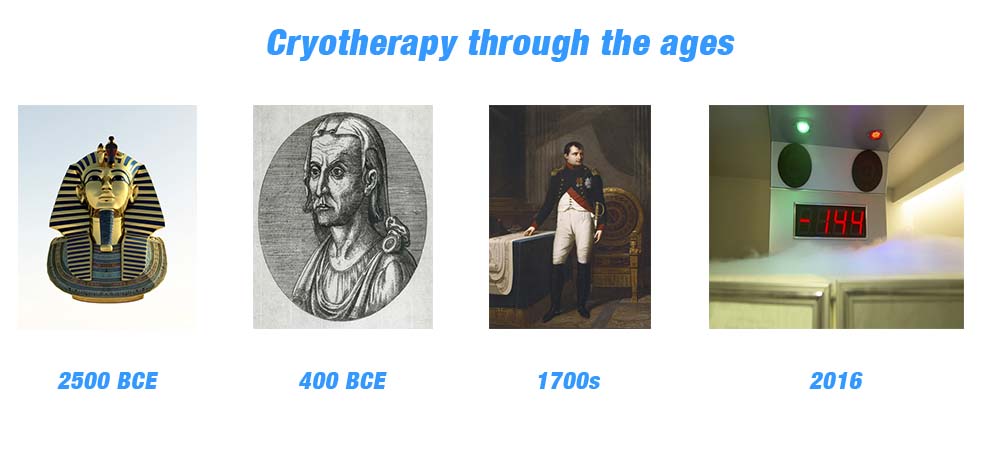Cryotherapy, the use of cold to treat physical ailments, has been around for ages, and cryotherapy history is quite “cool”.
The word cryotherapy comes from the Greek “cryo” which means cold, and “therapy” which means cure. Follow cryotherapy from its early days to the modern procedure of immersing the body in extremely cold temperatures for health benefits.
Cryotherapy History
References to cryotherapy have been traced as far back as the ancient Egyptians. Written records from 2500 BCE tell of Egyptian doctors treating injuries and infection with cold compresses. In 400 BCE, Hippocrates indicated that he put wounded soldiers in snow and ice to reduce bleeding and pain.
Napoleon’s surgeon is said to have used extreme cold as an anesthetic during the 1700s. In 19th century England, Dr. James Arnott applied cold for localized pain, headaches and even for shrinking tumors. During the 20th century, doctors continued measuring the effect of extreme cold on pain, swelling and skin diseases.
The Father of Modern Cryotherapy
A Japanese doctor named Yamaguchi experimented with freezing treatments in 1978, according to the Biological Medicine Network. He found that applying extreme cold around the painful joints and muscles of arthritis patients reduced their pain. He believed this was due to the release of endorphins, the body’s natural way to numb pain. In the 1980s he expanded his research from freezing specific joints to treating the whole body, and discovered that rapid short-term freezing in a cryo chamber had better results than the gradual freezing of an ice bath.
Over the years, cryotherapy’s popularity has grown as a medical procedure. Now that America has caught the cryo bug, frozen air is being used for both medical and cosmetic purposes. And to think, it all started with an Egyptian cold compress.
Stay cool and hip with this age-old tradition.
This post was written by Kim Tran.
The views expressed here belong to the author and do not necessarily reflect our views and opinions.










Get Social